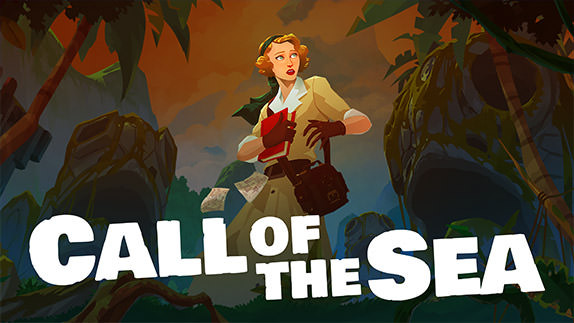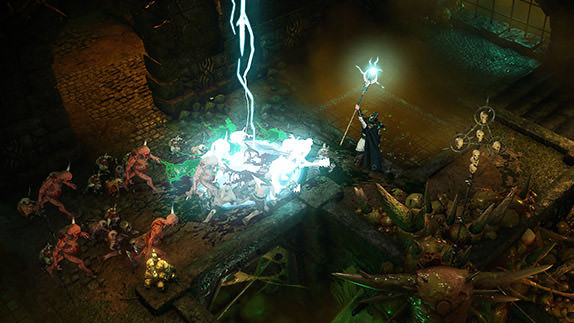The Legend of Zelda: Breath of the Wild Review

 By Kevin Mitchell | March 5, 2017
By Kevin Mitchell | March 5, 2017
Nintendo absolutely stunned their fanbase by reforming the recent Zelda formula with Breath of the Wild, refreshing the dungeons, puzzles, and even the core gameplay. The last two entries in the series left a sour note, failing to live up to their predecessors. While Ocarina of Time and A Link to the Past are discussed as the best and most influential games in the series, I believe that the original Legend of Zelda on the NES and The Wind Waker on the GameCube are still two games that I hold dear to my heart. Breath of the Wild has more in common with the original game than anything in recent memory, but even then it is the most thrilling, exciting, and free-spirited game in the series.
From the moment you awake from your slumber and set foot outside the gloomy cavern, you'll immediately realize just how big and open Hyrule has become. In typical Zelda fashion, Ganon has once again attempted to rule Hyrule and set forth ruin across the lands. As the hero, Link is the only one who can stop Ganon, but since he has been asleep for 100 years and the world's guardians have perished, this is a daunting task. You won't find or be given the iconic Master Sword from the get-go either. Instead, you must hunt and survive by scavenging weapons from enemies or finding them anywhere you can. Throughout the Great Plateau, the tutorial area, you'll be using anything from rusty swords to tree branches.
Your weapons aren't permanent, and their durability varies based on the quality of the item and what you plan on swinging them against. From sharp swords and blunt hammers to everything in between, there are plenty of weapons for you to use in Breath of the Wild, and you'll be swapping between them frequently. The same can be said about shields and even your bows. The first few shields I found, including a pot lid, only took a single hit before breaking, and good luck trying to snipe an enemy guard with one of the weakest bows without it breaking. Considering the sheer amount of changes from previous games in the series, I thoroughly enjoyed the challenge, hunting for new items where possible, and attempting to switch on the fly based on what enemy I was facing. One thing's for sure: this is not your typical Zelda adventure.
Exploration and travel are two key components in Breath of the Wild, and while running or galloping on top of a horse isn't new to the series, it is fully expanded to be completely satisfying. Make a wrong turn and find yourself face-to-face with a jagged mountain? Climb it. Fall off a cliff and into a nearby stream, but want to get back to the top? Climb it. Limited only by your amount of stamina, Link can freely climb anything out in the open world. While you won't be climbing to the volcanic top of Death Mountain in the first few hours of the game, you can explore quite a bit without improving your stamina meter. Scattered throughout the land are 120 Shrines, holding puzzle-based or combat challenges for our hero. If you prove your worth, you are rewarded with a spirit orb that can be turned into either a stamina or heart container once you receive four. These shrines can be considered mini-dungeons and include some of the most fun I've had while playing through the game.
Instead of featuring sub-weapons like in past games, such as a boomerang or hookshot, Link uses the Sheikah Slate to produce an infinite amount of bombs, harness the powers of magnetism, create an ice pillar, freeze time, take photos, or summon an amiibo. These are invaluable, not only for puzzle solving and traversing the environment but during combat. Instead of worrying about your sword breaking across a moblin's face, latch onto a nearby metal box and swing it with force towards a group of enemies instead. All of these powers can be upgraded later on in the game, making them your new best friend against the forces of evil. Not to mention, it is so satisfying to throw a rolling bomb down a hill and watch the wind push it directly into the middle of a camp of bokoblins.
After you complete the tutorial area, you are free to venture anywhere you want, and given the blank map you begin with, you'll want to find nearby towers. Once you reach the top of each one, it will reveal necessary information on your map, not to mention serving as a teleportation location. Considering how high up you are required to climb, it also gives you an opportunity to see nearby points of interest and to mark anything on your map. The main dungeons, if you can even call them that, are much shorter than the traditional ones you'd find in any of the previous games. While you don't need to finish them, they do play a significant component in the game's narrative. In each dungeon, you can control various sections to alter the landscape, open new paths, and find hidden treasure chests. The bosses inside are quite challenging and do help with the final confrontation against Ganon, but I couldn't help but feel severely letdown. Shrines already provide a short dungeon-type experience, but it just wasn't fun to explore these areas at all. Nintendo took my favorite parts of a Zelda game and massacred them.
As mentioned, shrines provide quick, crisp puzzle or combat challenges, and since they are littered across the map, you'll be encountering dozens of them throughout your playthrough. They feel well-balanced and creative, giving you unique situations that require you to use your best equipment and tactics and all of your gained abilities. More importantly, you can fast travel to all of the shrines you have located, making them an invaluable resource in traveling across Hyrule. While climbing, running, and swimming are limited by your stamina meter, rain will also have a negative effect on how much you can explore the game world. "Slippery when wet" is the best expression that comes to mind while climbing during a rain shower. Even attempting to climb the smallest wall or cliff, Link struggles to keep his grip, sliding downwards, making it nigh impossible to reach your destination. If Link is too hot or cold, you'll begin to lose hearts, requiring you to alter the clothing you are wearing to ones with stat bonuses for cold/heat resistance or drink the necessary elixirs. During thunderstorms, your metal equipment becomes a homing beacon for lightning, so tread with caution.
Another significant change in the series is focusing on Link's survival as he explores the open world. By collecting bugs, minerals, monster parts, meat, and anything else you can get your hands on, Link can cook many meals that provide unique bonuses. Standard food items can replenish your hearts; others can provide bonus hearts, weather resistance, and even boost your stamina. I'm sure an online guide can be found shortly after release, but at the time of this review, I've found enjoyment in figuring out what items can be cooked together.
Much of the game's narrative is told through optional flashbacks, and before venturing to Hyrule Castle, I spent a few hours finding the specific areas that trigger these sequences. Being optional, not everyone will experience the story the same way. Even then, there is no right or wrong order, and watching the scenes unfold out of chronological order was quite confusing. Link still performs the role of a silent protagonist, but you come across major story characters that feature voice acting.
Nintendo released a handful of new amiibos based on characters in Breath of the Wild, but all of the existing Zelda amiibos function with the game. In fact, there are exclusive items that can only be obtained through these older Legend of Zelda amiibos. Each amiibo can only be used once a day, providing bonuses such as caches of cooking materials, arrows, weapons, and armor pieces. For example, the 8-bit Link amiibo can drop a full set of items based on the original NES Legend of Zelda game. Because none of these original amiibos are being produced anymore, and current online prices are greatly inflated, I find it quite appalling. Locking items behind these figures is no different than releasing expensive and exclusive downloadable content.
Simply Put
The Legend of Zelda: Breath of the Wild is without a doubt going to be one of the most discussed titles on the Nintendo Switch. There are going to be longtime fans who will hate the direction the series has gone, but it should appeal to a much younger audience. There are frame rate issues in both docked and handheld modes, but docked mode certainly has more technical problems. Breath of the Wild has surprised me at every turn, and after the lackadaisical Skyward Sword, I'm elated to see the series try something new. I am disappointed that the overall narrative is lacking and Link losing his memory is quite cliché. The open-world gameplay will surprise folks, but overall I came away disappointed with my time spent with the game. It just didn't grab me enough. I didn't feel the need to explore every inch of the map or experiment with the weapons and how they interact with the environment.
Note: The Legend of Zelda: Breath of the Wild was reviewed on Switch. A physical copy of the game was purchased by SelectButton.




